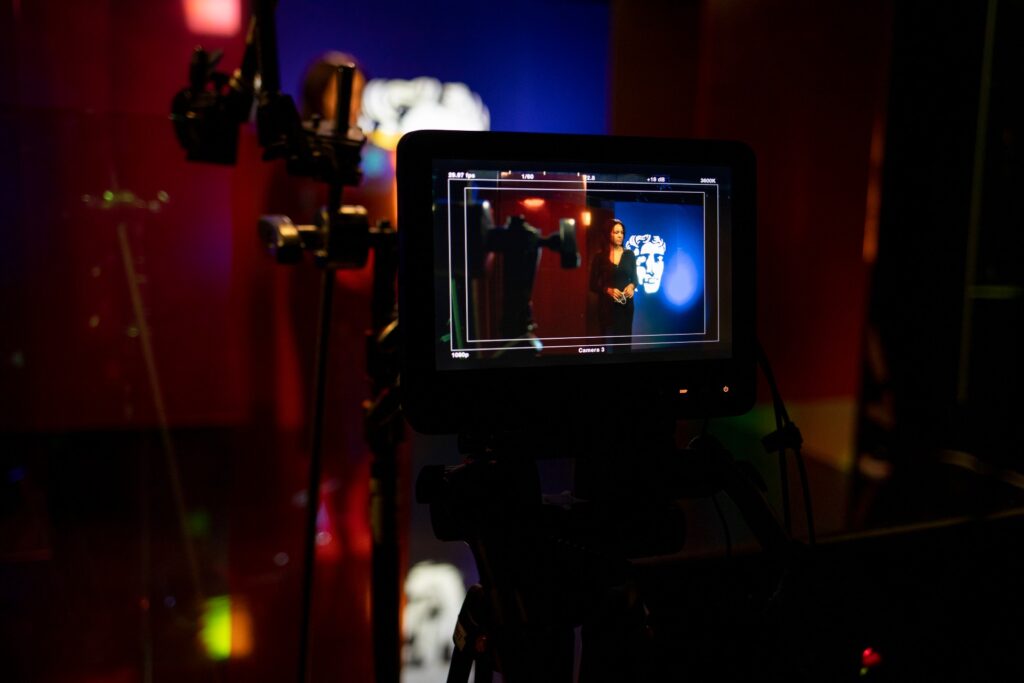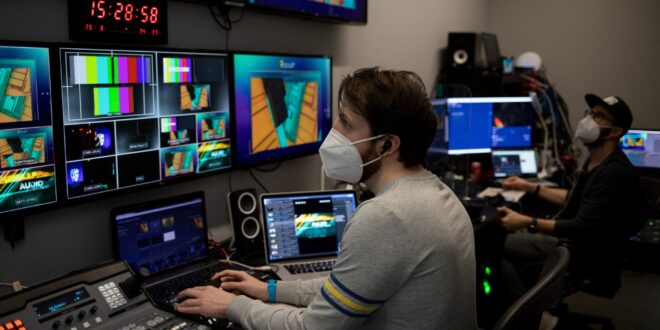This article comes courtesy of games events agency ADVNCR.

From Glastonbury to Gamescom, events have undergone a dramatic shift in lockdown. The need for social distancing, travel restrictions and PPI has meant that real world gatherings have just not been possible for many, many months.
However, it’s not all doom and gloom. The games industry in particular has adopted digital formats and Cloud-based technologies at a rapid rate, keeping content on screens and players in seats to watch all the important industry updates.
Indeed, there are many benefits to going virtual that should be maintained post-pandemic. Just last month, BAFTA kept 30,000 viewers engaged throughout their annual Game Awards show—triple the audience of last year—demonstrating how games can be a powerful tool for bringing people together in the virtual world.
Now, the games-focused events agency ADVNCR reveals what we can expect moving forward. As the company’s Director of Content, Mark Bishop, looks toward the end of lockdown, we discuss how gaming events have changed, what organisers have learned and what this will look like in a post-pandemic world.
What changes did you first notice as the pandemic started in terms of video games events?
The first change was probably driven by panic in that everyone had events due to happen and suddenly had to massively pivot, which threw up a load of challenges for everyone. Contributors and studios were all working from home – struggling to just complete their duties to deadline, nevermind all the PR/marketing around those jobs. ADVNCR were well-placed to react quickly because we already do a lot of event elements remotely – streaming and pulling in feeds from around the world. It’s in our remit anyway as a video games-focused agency, leveraging offices either side of the pond in both London and LA. This gave us an advantage over more traditional broadcast companies.
We started speaking to companies to assure them events were still achievable and we had infrastructure already in place. In those first few weeks, the bar for success was quite low. Just pulling together digital events that worked was an achievement in itself for many companies. Zoom conferences on the news set the standard. People were hungry and happy to receive any new content. At ADVNCR, we felt the bar could be higher, especially as we have our own studio in London already set up to coordinate and distribute feeds from all over the world. We were also already working with streamers who have the camera, technology and home set-ups to contribute. Our ambition was to work with developers to adapt their methods and get closer to a true broadcast standard – especially after the initial few weeks of lockdown
Did you bring any improvements to the quality and content of events as lockdown progressed?
First, was just breaking out of the standard boxes of Zoom and bringing in seperate feeds to create a more dynamic viewing experience. We could make something much more polished by cutting between different people, inserting graphics, playing video and essentially making either a live-stream or pre-recorded product that served the content much better than just a simple Zoom.
One of the benefits of working in the games industry is that technology is constantly evolving. All of our clients are hungry to be first, to be innovative, and are really receptive to doing new things. That was very appreciated in this period, because we had to try new things. Not many pre-COVID methods would have worked.
How do you tackle the hands-on gameplay part of gaming events remotely?
That was definitely an immediate challenge, since we’ve been doing a lot of virtual press events. There’s obviously the interactive gameplay, but also the more social element that guests get from playing and networking together. Plus, the awareness that games can drive by inviting influencers to a physical event, getting that photo opportunity and supplying souvenirs.
If showcasing gameplay remotely, lag is the number one challenge, because you’re dealing with a number of participants at home on varying internet connections. There’s a number of different remote platforms ADVNCR has been using to mitigate these challenges, such as Cloud services. It’s really now starting to see fruition, especially with Xbox investing heavily in cloud-based gaming. Another solution is allowing guests to remote into a PC from a different location, usually in the dev’s studio, so people can experience a hands-on playthrough without the hardware at home to run or developers releasing code into the wild. There’s minimal latency and gameplay can then be captured and sent for use in their coverage.
Alternatively, we’ve hand-delivered Xbox consoles with code on to specific people, and a courier waiting outside to return it to ensure they have the best possible play.
How do you maintain community spirit at a digital event?
Networking is a crucial part of events, especially when it comes to influencers. A lot of their work is solitary, spent making YouTube videos every day of the week. Also, games media to a lesser extent. These people cherish going to an event, not only to get information, but also catch up with fellow professionals and industry friends.
There’s a number of ways at ADVNCR that we’ve been trying to keep people connected, such as sending out goody bags ahead of a virtual event. This could be as simple as a cup of coffee, box of donuts or something branded/tied to the game. It’s something that feels bespoke and special, delivered right to their door, uniting everyone involved. Participants then get that shareable moment, which is perfect to start a discussion on social media, especially Instagram.
Building out networking into all the events we do is important. This was true for the BAFTA Games Awards recently and for the MCV Women in Games Awards, which happened towards the end of last year. ADVNCR coordinated all the nominees appearing throughout the show, using Discord servers to help keep each group connected. What we felt was very important was also hosting break-out rooms after the show. Guests could then interact and network with each other as they would at a physical show. This format works especially well for games industry awards, as nominees could watch-along, chat and have a laugh. For me, what happened in that after-show felt just as important as the main event, allowing all those people to come together, swap contacts, celebrate and feel they’ve gained a lot out of the experience.

What was your biggest success in the lockdown period?
In May, ADVNCR arranged a remote music show featuring a 45-minute Jade Bird performance. Each band member was playing live in their own homes, separately, and we had to bring all those feeds together from four different locations. It was a huge technical achievement. The ADVNCR team was able to resync the feeds with each other down to a millisecond in our central gallery, while enabling band members to interact with each other. We rehearsed extensively to ensure the band could perform together.
We also wanted the performance to look spectacular, not just sound spectacular. Our team did extensive graphics work, treating each track like it’s own music video complete with bespoke animation. Viewers could even change colours and animations as they watched the performance, for that extra bit of interactivity.
Since then, ADVNCR was brought on board to produce a series of shows for GlitchCon in partnership with Twitch in November – a six hour live show using XR technology from LA. It involved a virtual studio, a virtual set, and an altogether complicated build. We also had two other remote shows from our London studios feeding into that broadcast as well. It was a very ambitious project involving a lot of emerging tech, in terms of XR Studios, and combining it with the scale of an esports event and feeds from around the world.
ADVNCR also worked with Xbox on their new console launch, Xbox Series X, working simultaneously with US and UK on both local and global activations. We were in charge of managing feeds from studios all around the world, bringing everything into the live show, coordinating remote guests and improving the at-home set ups of participants. We didn’t want people just filming on their iPhone, so sent out remote kits to ensure quality. Six months of remote working experience had really paid off by this time.
Finally, BAFTA Games was a really exciting project to work on. Last year, they had to do a remote show at the very last minute. This year, ADVNCR had the benefit of going into a remote show with full awareness and experience. We had eight remote presenters and 40 nominees brought into the show. It looked really slick and polished. At a real-world award show, you normally have this exciting dynamic between the host and the audience. It’s difficult to capture that with just a host on-set by themselves, but we succeeded by leaning into video packages produced specifically for the show and bringing in as many guests live as possible.
We organised interviewing senior faces from around the video games industry. We spoke to Aarion Greenberg from Xbox, Vince Zampella from Respawn and a whole host of other people using our connections for some powerful content that set the tone for that show. It felt really uplifting and positive during a year that’s been challenging for everyone, celebrating success in the industry.
Are there any benefits to digital events over real life? And do you think the games industry will keep any of these elements post-pandemic?
You can achieve things in digital events that are really hard to do in the real world, especially when it comes to talent. It would have been impossible to get the line-up that we did for BAFTA Games to all fly into London for one evening in March, for example. We found that across so many events. The amount of people, especially high level, that we have access to has skyrocketed in the digital format. These are really well-established gaming figures and more mainstream celebrities – such as Xavier Woods and Greg Miller appearing in the BAFTA Games stream. It’s opened the doors to bringing in an incredible line up, and it’s not something we’ll want to let go moving forwards. Everyone wants to get back to being in a room with people, but now we’ve got the confidence to have some speakers participate remotely as well. In the last year, we’ve proved that it can work and it does work, which means a lot more hybrid events are on the horizon.
The reverse is true when it comes to participation of guests and viewers. If I put on a physical event, then maybe 1000 people can attend it. However, when doing events virtually, everyone is attending via stream. They’re the primary audience, so events are tailored to them . Even when we do physical events post-pandemic, there could be another million people watching remotely, especially for the big industry conferences like E3 or Gamescom. It’s not limited to the people in the room – your biggest audience is beyond the room, and now we have the framework in place to ensure they get the best possible viewing experience, making it as engaging as possible. They are now a primary audience.
Not to mention, international travel will still be difficult for a while even as countries will start to open up, so hybrid events are very much necessary. There could be a games launch from LA, with a sub-venue in London, and a couple digital streams linked in. It’s still one show, but everyone can get an experience regardless of limitations. Everyone is also keen to reduce their carbon footprint and digital events are a big step in this direction.
Everything we’ve learnt in the past year can help inform the future of events.

 MCV/DEVELOP News, events, research and jobs from the games industry
MCV/DEVELOP News, events, research and jobs from the games industry




